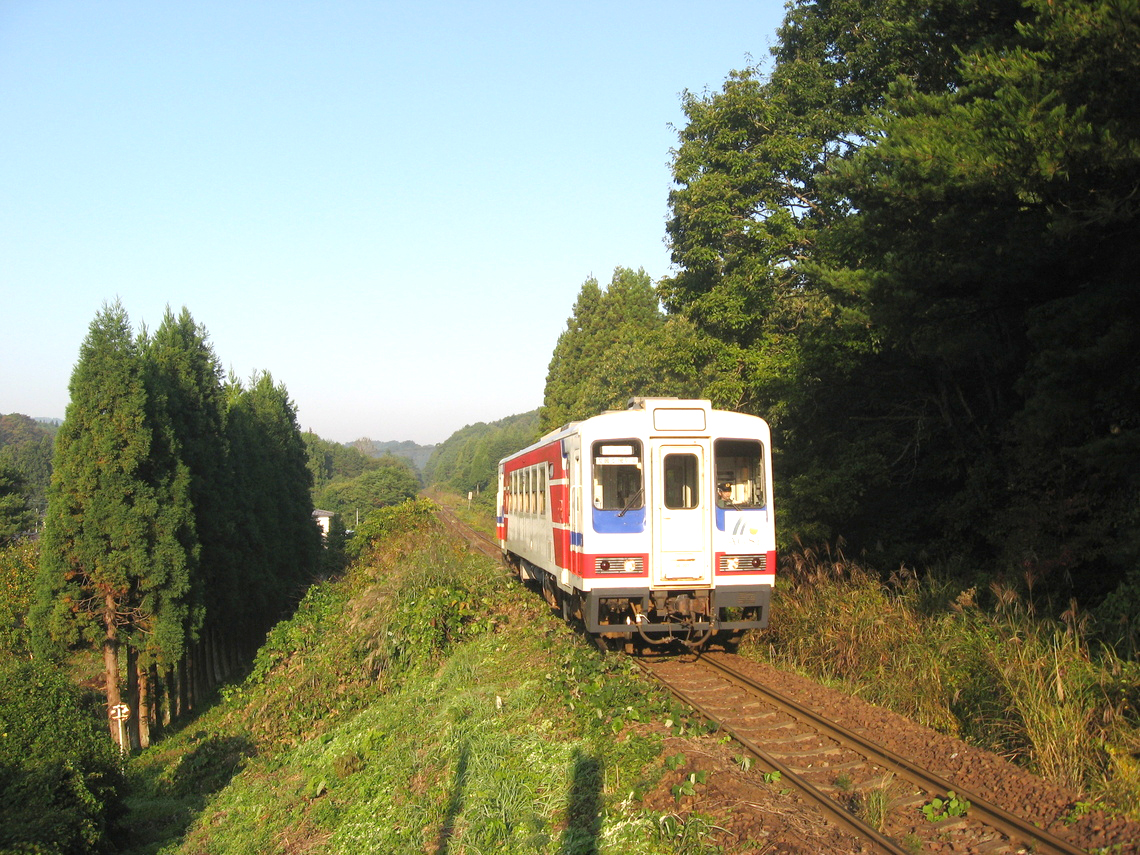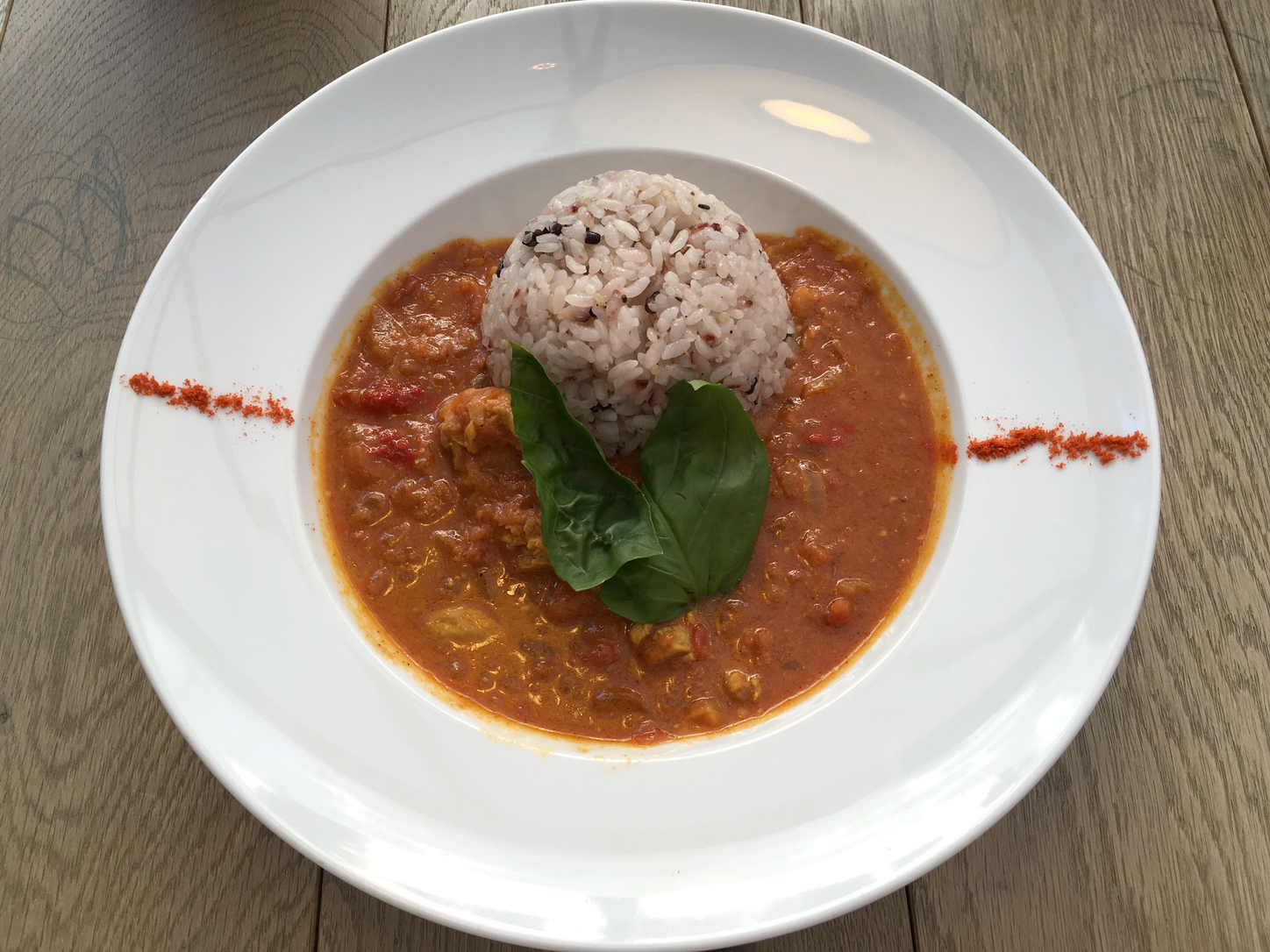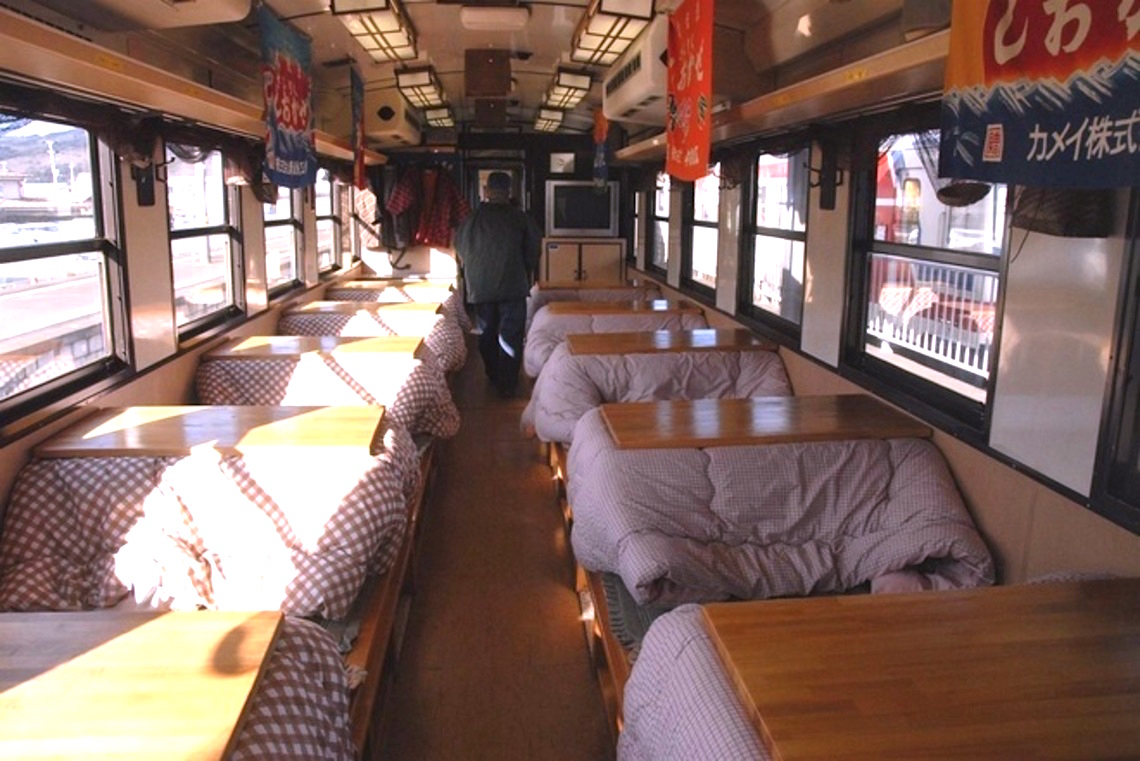Best way to warm up in winter: eat all your meals with legs curled up cozily under one of these traditional Japanese heater-and-futon tables. Here are four ways and places to enjoy the comfort of kotatsu in Japan…
At Home
The Story: Although the kotatsu has been around for centuries in Japan, the modern form is somewhat different to the original sunken hearth and charcoal burner. Today, it consists of a low table that has an electric heater fixed underneath. The contraption is covered by a futon or quilt, which extends over your legs as you seat yourself on the ground around the table. It’s so cozy that pets are bound to join in, and no-one will judge if you fall asleep and stay put all night long.
What to Eat: Nabe (hotpot) on a portable stove. Also, if you arrive at a friend’s kotatsu dinner party with a bag of mikan (mandarin oranges), you’ll receive a round of applause. We’re not entirely sure why, but mandarins and kotatsu go together like popcorn and movies.
Where to Buy One: We like the brand Nakamura. Their kotatsu kits are available from Rakuten for around ¥40,000, and you can even buy the quilts separately should you want to switch them up every now and then. Click here to purchase the kit pictured below.

Ryogoku Terrace
The Story: With a strong focus on health, this tucked-away terrace restaurant offers nutritious, balanced dishes. It also encourages you to exercise by offering rental gear, and shower and locker facilities in the pleasant Runcube space just next door. Wondering where to run? The restaurant is situated alongside Sumida River, with a jogging or walking path easily accessible.
What to Eat: Go for the lunch set, which includes soup, rice, and your choice of three main dishes. They offer millet in place of white rice if you prefer, and you can look forward to plenty of healthy Japanese ingredients such as seaweed and daikon. For dinner, it’s nabe, naturally.
The Kotatsu: During winter, the terrace is transformed into a comfy scene of blankets draped over heater tables, dotted around the raised wooden floor. Best of all, your view is of Kyu Yasuda Garden, where you can also take a stroll after lunch.
1-12-21 Yokozuma, Sumida-ku
www.ryogokuterrace.jp

Sanriku Kotatsu Train
The Story: How to revive the tradition of kotatsu and boost railway profits at the same time? Create a kotatsu train! For the past decade or so, Sanriku Railway has been offering a special two-car train boasting 12 kotatsu, giving travelers the chance to experience the ultimate winter wonder expedition.
What to Eat: Reserve a bento one day before boarding the train – your lunch box options include Sea Urchin and Abalone (¥1,600), Sea Urchin (¥1,700), and Scallop (¥1,200). To reserve the coffee and sweets set (¥700), make sure you ask for it when buying your ticket.
When to Go: Until March 26, on weekends and national holidays only, the train will run between Kuji and Miyako, with the roundtrip starting at 12.13pm and finishing at 4.46pm. A one-day pass costs ¥2,500 and reservations can be made between 9am and 6pm by calling 0193 62 8900. For more info (in Japanese only), visit www.sanrikutetsudou.com

Yoyogi Curry
The Story: Opened in 2013, this terraced restaurant has a prime spot just near the entrance of Yoyogi Village, which is a trendy little space near Yoyogi Station featuring eateries, coffee shops, and plenty of greenery.
What to Eat: Curry, of course. They have a few different kinds to choose from – we’ve tried the Asian Chicken, and the Butter Lemon with Shrimp, and both were delicious, not very spicy, and reasonably priced at ¥980. If you’re there for dinner and want to expand on the selection, they also offer a variety of starters (try the Stewed Octopus and Olive with Tomato), and meat dishes, along with a complete menu of drinks which are served from their cute bar at the back of the restaurant.
The Kotatsu: Until April, they have closed in their terrace, and added blankets and heaters to all the tables, making this the best curry experience we’ve yet to have.
1-28-9 Yoyogi, Shibuya-ku
yoyogi-curry.com


Updated On April 26, 2021










